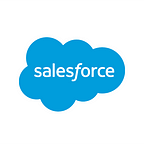8 Things I Learned After Launching My First Podcast
By Heike Young
In September, I produced, recorded, and launched a podcast for the first time. I didn’t have a background in audio production and had never before podcasted.
But as a Salesforce employee, I suspected the format would be perfect to discuss marketing best practices, obstacles, and trends — as well as showcase the smarts of Marketing Cloud’s customers, marketing friends, and partners.
It’s called the Marketing Cloudcast, and we’ve now released 18 episodes and reached thousands of marketers. Check out the podcast on iTunes and recent episode recaps here on Medium.
Podcasting is having a moment now like never before.
If you’re a marketer, you’re probably already thinking that podcasting might be a great format to reach your audience. Consider these reasons why you might want to start podcasting:
- Podcasting is easy for beginners to learn and execute.
- It’s inexpensive. Hosting plans on Libsyn (which is what we use at Salesforce) start at $5/month, and you can get started with the built-in microphone on your computer and free Skype app.
- 17% of Americans have listened to at least one podcast in the past month, and that number is growing quickly.
After four months, I’ve learned a lot about this medium, which I definitely recommend for storytellers (either brand or personal) wanting to explore something new. Here are a few musings from my brief podcasting tenure.
1. Podcasting doesn’t require excessive technical expertise — but that doesn’t mean it’s quick.
For every new episode we release, I research the guest, create interview questions, schedule time to record (and sometimes reschedule due to changing calendars), send technical instructions, and answer any questions the guests might have. And that’s all before we actually record!
Read this helpful post by Jay Baer if you seek more details on what producing a podcast actually takes. Think hours, not minutes.
2. Getting the show on iTunes is easier than you might think.
As I mentioned earlier, I use Libsyn to host the podcast, and it takes care of everything. You just upload the show, Libsyn creates the podcast feed, and you set up a new podcast in iTunes using that Libsyn link.
I thought it would be some kind of crazy approval process, but it wasn’t. From the time I sent the link to the time our show was live was around 4 days.
3. It’s all about the stories and people, not marketing.
To use podcasting as a marketing tool, make sure you’re not going into it for the self-promotion. You have to feature interesting personalities sharing real content and stories.
Your brand may benefit from having a podcast in your name, but it can’t be all about you. Your content has to center on the industry and topics that matter to your customers and target audience — just like all your content marketing should!
4. Podcasting can be a lead generation tool.
Yep, I know I just said you shouldn’t focus on marketing, which is true. But a very small portion of your airtime can be devoted to promoting a relevant (that’s key!) piece of content for lead gen.
On the Marketing Cloudcast, every episode features a 45-second promo, usually for a new e-book that relates to that episode’s main topic. We share a short URL that features the podcast as a driver. This way we can track new e-book downloads and leads that come directly from the podcast. It’s not a main focus of the show and podcast listeners are accustomed to short commercials, so I don’t think it detracts.
5. Podcasting is for a niche, but loyal, audience.
Just about any customer or prospect will skim a blog post when they need information; not everyone will download a podcast. Some people just aren’t into it. Similarly, a blog post might take 5 minutes to read, but a podcast takes 20, 30, or more minutes to hear.
That makes your podcasting audience very special. Podcast subscribers listen to your voice week after week, accept your quirks, and keep listening. I like that about podcasting. It’s genuine and comes to you straight from my home studio (cough — closet), not a soundstage.
6. Avoid the urge to script.
I’m a writer, so my natural instinct is to write out soundbites and segues so I can rely on my perfectly scripted words instead of improvisation. This is a bad practice. Real conversation sounds so much better on a podcast than something scripted.
The more I podcast, the more I’m striving to become confident in my spur-of-the-moment thoughts. I definitely envy people like Joe Pulizzi (whom we’ve featured on the show) who are total naturals at this.
7. Scheduling guests is the #1 hardest part.
My estimable co-host Joel Book has a globetrotting travel schedule that surely keeps his frequent flyer accounts happy. And we’re constantly interviewing high-level marketing execs and experts who book their schedules months in advance.
The hardest part of producing a podcast with multiple hosts and a guest is getting everyone scheduled. You’ll need to be organized and a good planner if you want to make this type of show.
8. As Mister Rogers as it sounds: Just be yourself.
Being a good podcaster is no different from being a good writer, coworker, or person. Give people the chance to know and like the real you.
I’m learning more about this format every time we record a new episode. In 2016, my goals are to grow our audience, improve our content format for an even tighter show, and maintain the high caliber of guests we’ve had so far.
I hope you’ll check it out on iTunes and let me know what you think! Tweet @youngheike with marketing questions or topics you’d like to see covered on the Marketing Cloudcast.
This post originally appeared on the Pardot blog.
